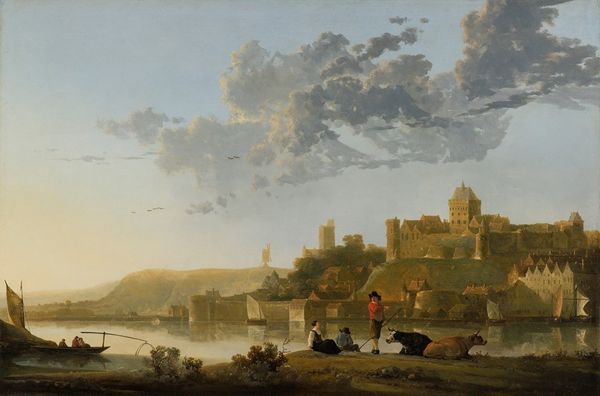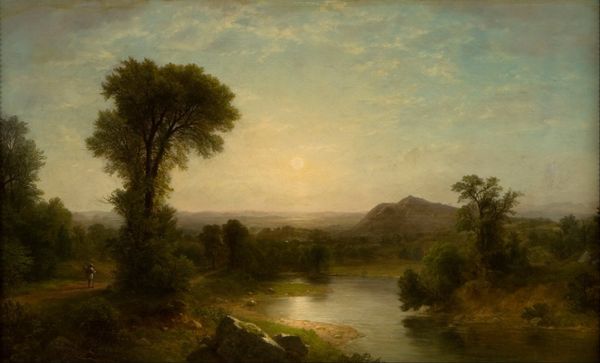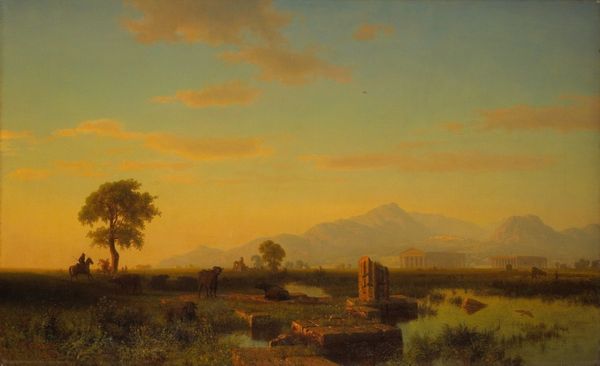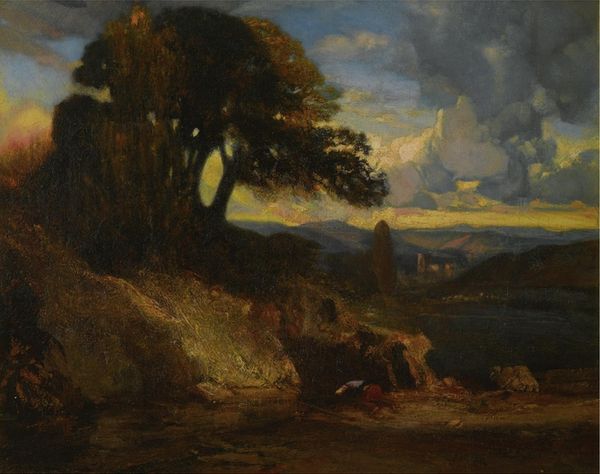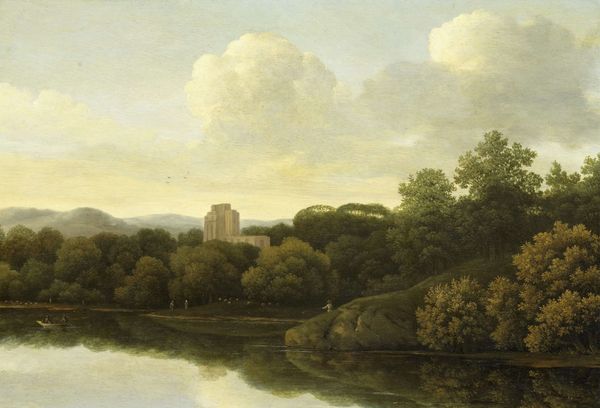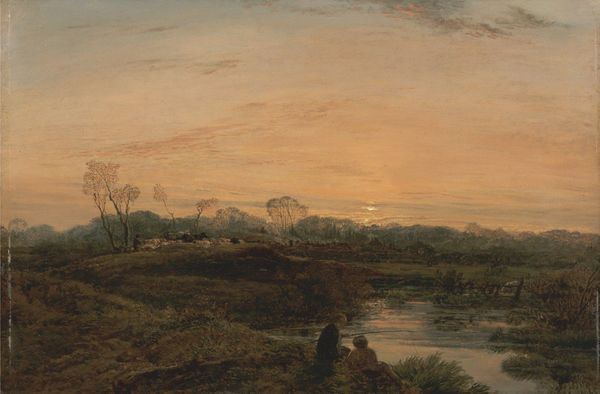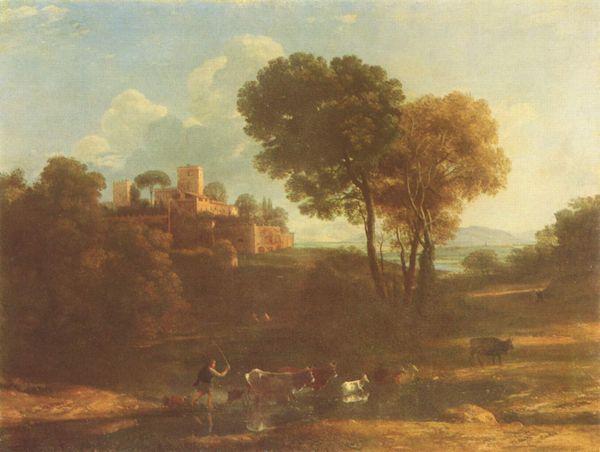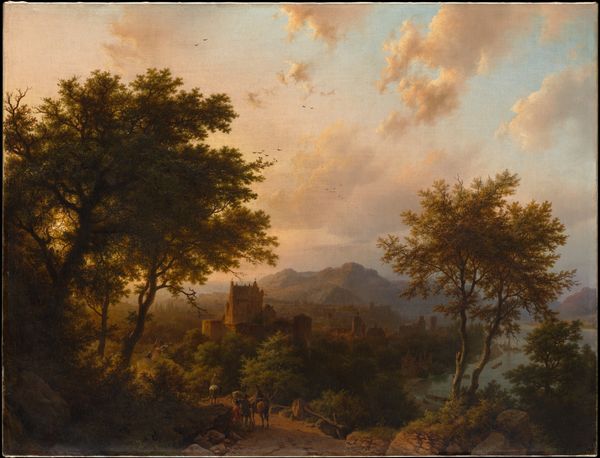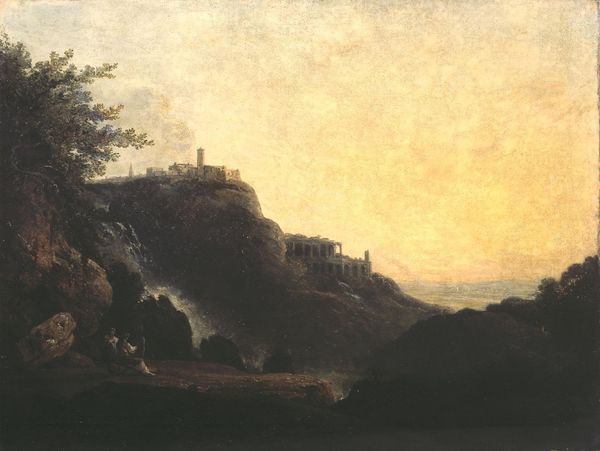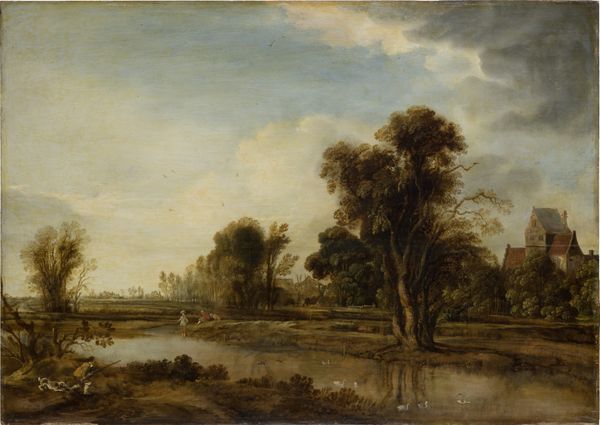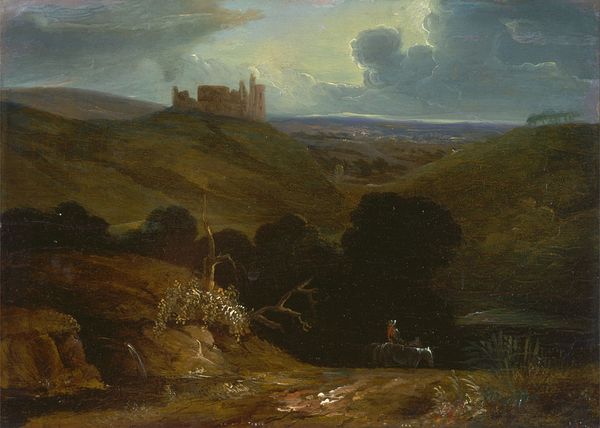
Dimensions: 71.76 x 111.76 cm
Copyright: Public domain
Curator: Standing before us is Albert Bierstadt’s "Valley of the Po," completed in 1857, a luminous oil painting epitomizing the Hudson River School's interpretation of landscape. Editor: It feels staged somehow, a perfect pastoral scene touched by…melancholy. That ruined tower on the right contrasts so sharply with the idealized peasants crossing the bridge. Curator: Precisely. Bierstadt wasn’t just painting a place; he was crafting a historical narrative. Consider the strategic placement of that crumbling tower—a potent symbol of the passage of time and lost grandeur against the backdrop of what was considered, even then, old money. Editor: And the light! It's that crepuscular light so loved by the Romantics—not quite day, not quite night, blurring boundaries. It invites contemplation on a grand scale; one can almost smell the moist earth and feel the heavy humidity, all designed, it feels, for export back to an expanding American landscape. What are the psychological dimensions of its art historical legacy? Curator: A fascinating observation. Remember that art during that era served distinct societal functions. Art galleries of that time reflected cultural aspiration, often fueled by an unspoken cultural anxiety, but it equally speaks to the allure of the sublime – nature as a power that dwarfs human endeavor, though perhaps made docile through art and culture. The way the light dances on the water's surface almost suggests a beckoning, doesn't it? Editor: A beckoning and a warning, perhaps. That haze softens the details, making the landscape timeless. And that haze acts as both the subject and object of this work - is that landscape inviting or isolating, especially if one understands the displacement felt by those removed from these lands. This tension adds layers, beyond just a scenic vista. It is deeply interesting to think about how the aesthetics are equally political as artistic. Curator: Indeed. Bierstadt's 'Valley of the Po' offers us more than a view; it provides insight into the complex relationship between artistic vision, historical context, and the very construction of national identity. Editor: A poignant reflection on how landscape—and its presentation—can subtly yet powerfully shape perceptions and memories.
Comments
No comments
Be the first to comment and join the conversation on the ultimate creative platform.

